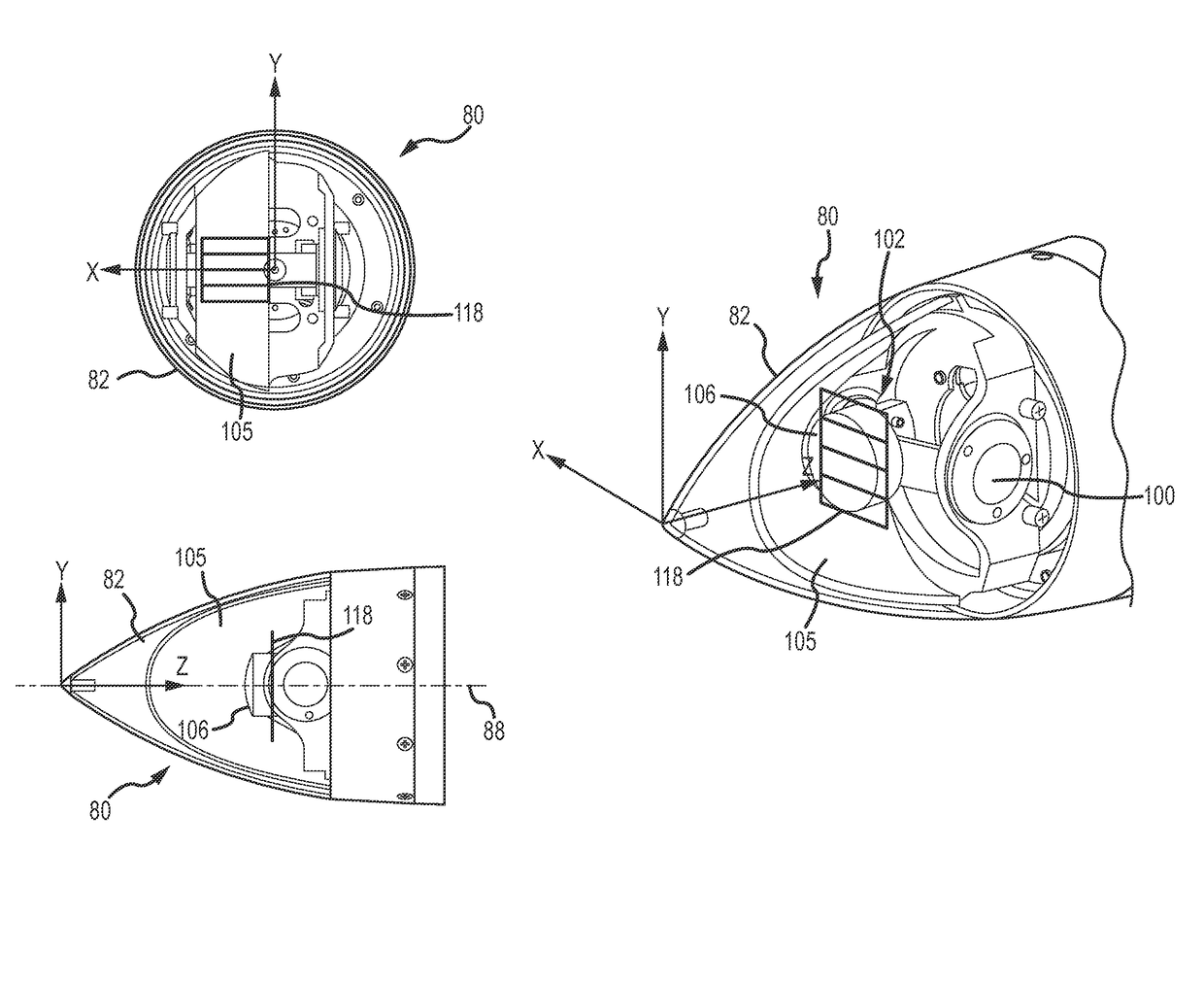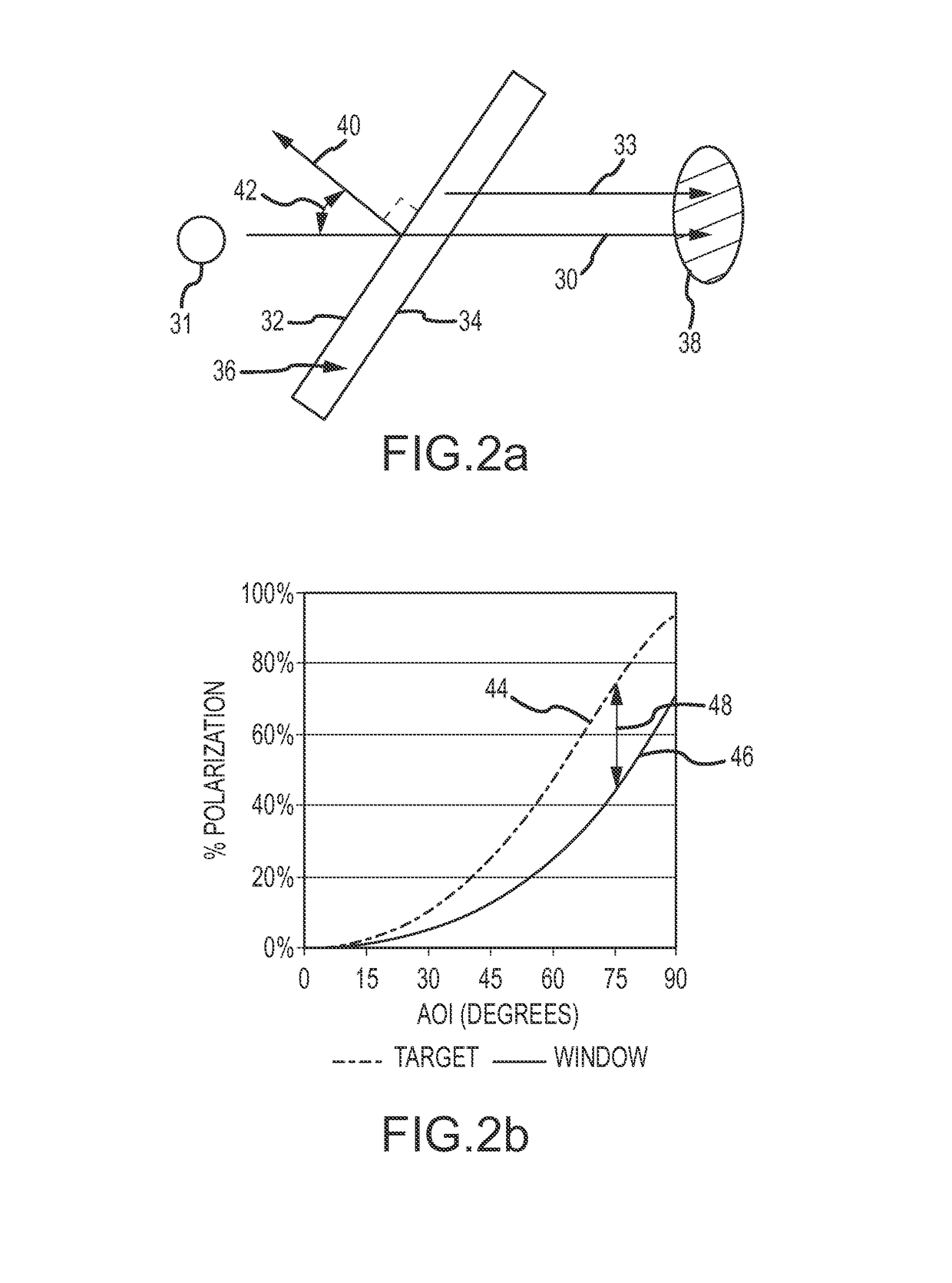Polarization Filtering for Window Self-Emission Due to Aero-Thermal Heating
- Summary
- Abstract
- Description
- Claims
- Application Information
AI Technical Summary
Benefits of technology
Problems solved by technology
Method used
Image
Examples
first embodiment
[0051]A polarizer is positioned in optical path between the off-axis segment 96 of optical window and a detector 116 (e.g., quad-cell or FPA) positioned at or near the focal plane. In a first embodiment, a polarizer 117 may be positioned off-gimbal. If polarizer 117 is a sheet polarizer it can be positioned at any arbitrary position along the optical path. If polarizer 117 is a microgrid polarizer it must be positioned at the FPA or an intermediate image of the focal plane. If off-gimbal, the polarizer is only aligned to the plane of incidence (as defined by surface normal 119 to the optical window) at a specified roll / nod orientation (e.g., 0° , 0°) and an orientation 180° out of phase (e.g., 180°, 180°). To read out the detector, the gimbal is rotated to one of these two positions. The “mechanism” for aligning the polarizer is thus implemented by the nod gimbal and rotation of the nod gimbal. As will be discussed further, if the sheet polarizer is implemented with a dynamic microg...
second embodiment
[0052]In a second embodiment, a polarizer 118 is positioned on the nod gimbal 102 (“on-gimbal”). If polarizer 118 is a sheet polarizer it can be positioned anywhere in the optical path on the nod gimbal and optically aligned to the plane of incidence, and remains in the plane of incidence as the roll and nod gimbals rotate about their respective axes. As shown in FIG. 4b, the lines of the sheet polarizer indicate the direction of the pass axis. If polarizer 118 is a microgrid polarizer it must be positioned at an intermediate image 120 of the focal plane on the nod gimbal and optically aligned to the plane of incidence, and remains in the plane of incidence as the roll and nod gimbals rotate about their respective axis.
[0053]A processor(s) 122 processes the signal to generate data produces. For a sheet polarizer, the processor generates a radiance image. For a microgrid polarizer, the processor may generate a radiance image, an AoLP image and a DoLP image. Electronics 124 use the da...
PUM
 Login to View More
Login to View More Abstract
Description
Claims
Application Information
 Login to View More
Login to View More - R&D
- Intellectual Property
- Life Sciences
- Materials
- Tech Scout
- Unparalleled Data Quality
- Higher Quality Content
- 60% Fewer Hallucinations
Browse by: Latest US Patents, China's latest patents, Technical Efficacy Thesaurus, Application Domain, Technology Topic, Popular Technical Reports.
© 2025 PatSnap. All rights reserved.Legal|Privacy policy|Modern Slavery Act Transparency Statement|Sitemap|About US| Contact US: help@patsnap.com



